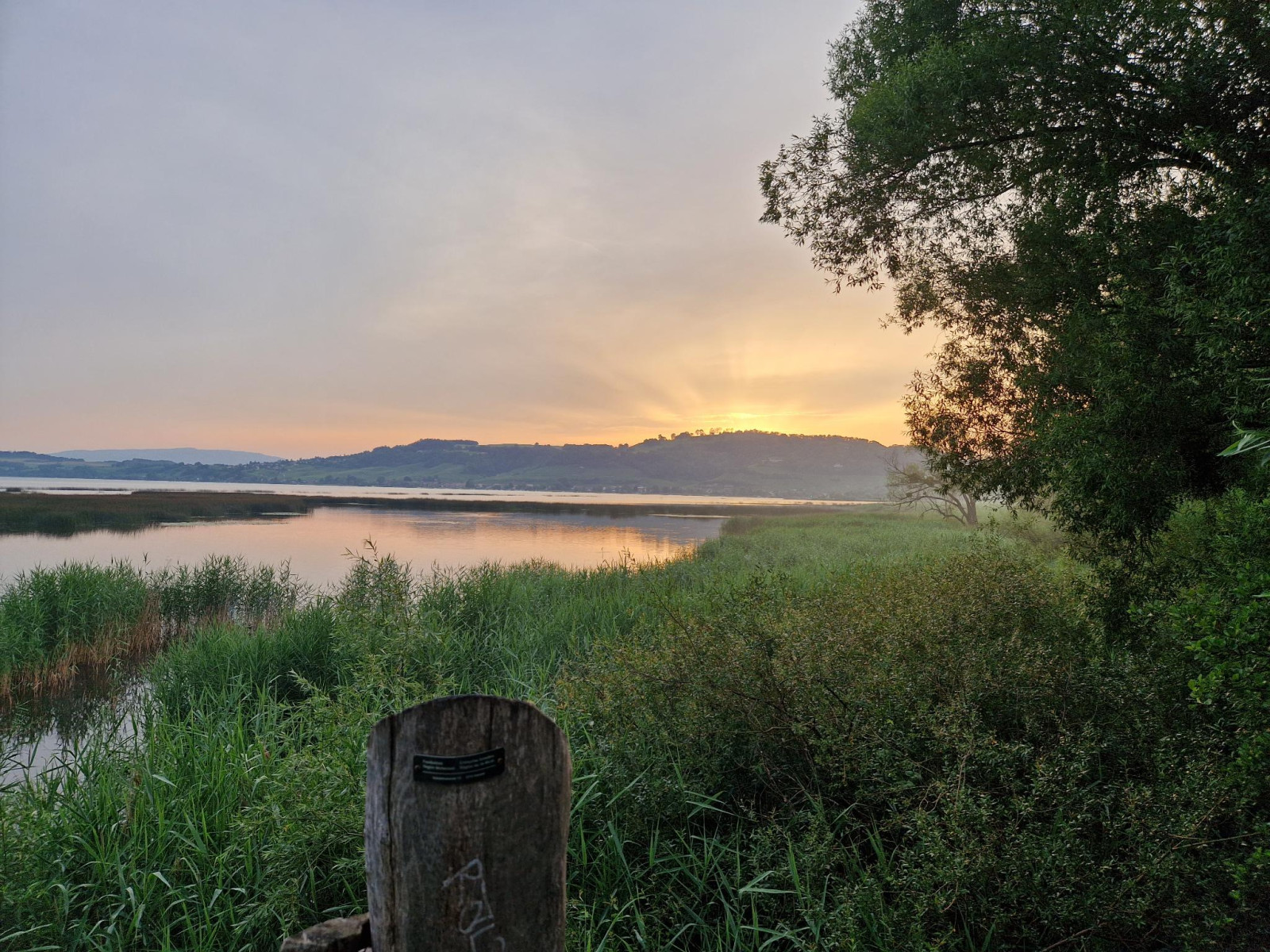Beschreibung
The Chablais lies between the prominent and ornithologically interesting Mont Vully and the small Löwenberg on the northern shore of Lake Murten. The deciduous forest there is only a hundred years old. It was created by artificially lowering the water level at the end of the 19th century. A wide reedbed extends into the lake, which can be partially observed from platforms.
The beautiful footpath lends itself to practising bird song identification: The view of the reedbed and the lake is often obscured, from where Drosselrohrsänger, Rohrschwirl, and Teichrohrsänger call. Pirol, Gartengrasmücke, and Nachtigall sing in the high treetops and thickets. Kleinspecht, Mittelspecht, and Schwarzspecht also breed here. A view from the platforms is not only rewarded with spectacular sunsets. Wasserralle, Eisvogel and, with a bit of luck, Zwergdommel can also be seen. Flußseeschwalbe, which breed on the artificial raft at the northern end of the area, often fly past.
In future, it may also be possible to observe the Fischadler more often, which is to be reintroduced to the Central Plateau. Singschwan, Löffelente, Pfeifente, and Bekassine are not uncommon winter visitors. Finally, among the rarities observed here are the Bergente, Ringschnabelente, Rotfußfalke, Seidenschwanz, Zwergsäger, and Zwergschnepfe.
Details
Zugang
The Le Chablais area can be reached by train either from Sugiez in the north or Muntelier-Löwenberg in the south. If you are coming from Sugiez, it is worth going first to the quay of the Canal de la Broye and looking to the left at the breeding platforms of the Flußseeschwalbe. The path through the area that is closest to the water and from which you can reach the observation platforms can only be explored on foot (a cycle path runs parallel to it). Numerous information boards along the way explain the natural area.
Terrain und Habitat
Wald , Feuchtgebiet , Schilfflächen , SeeBedingungen
FlachRundweg
NeinIst ein Spektiv nützlich?
Möglicherweise hilfreichGute Beobachtungszeit
GanzjährigBeste Beobachtungszeit
FrühjahrRoute
unbefestigte StraßeSchwierigkeitsgrad der Tour
EinfachErreichbarkeit
zu FußBeobachtungshütten oder -türme
JaZusätzliche Informationen
Many mosquitoes breed here at the corresponding times of year. There are fewer of them on the platforms, but it is definitely advisable to take mosquito spray with you on the way.





